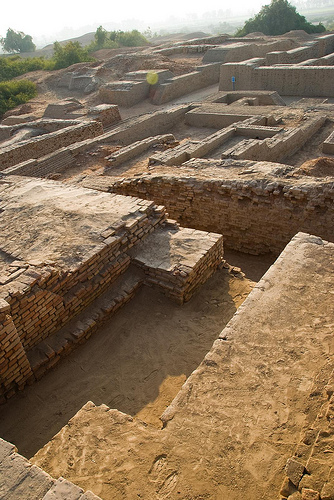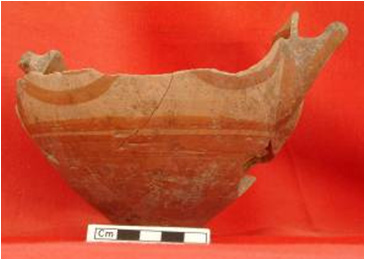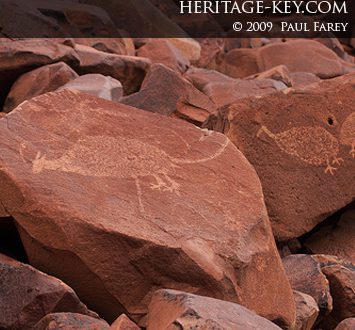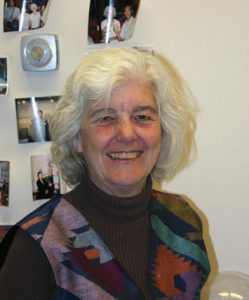 To say that archaeologist Sarah Milledge Nelson has had a productive career would be a gross understatement. The University of Denver archaeologist has held the John Evans professorship. A position that every faculty member, at her university, competes for, but only one person gets each year.
To say that archaeologist Sarah Milledge Nelson has had a productive career would be a gross understatement. The University of Denver archaeologist has held the John Evans professorship. A position that every faculty member, at her university, competes for, but only one person gets each year.
She wrote the book on Korean archaeology – literally – and has written or co-written somewhere in the neighbourhood of a dozen books, as well as numerous articles.
She’s done fieldwork throughout Korea and extensive work at Niuheliang, a Neolithic site in China. She even pens works of historical fiction. Right now she’s working on one about China’s famous Lady Hao.
Some of her most recent writing has focussed on spiritual matters in ancient East Asia, especially Shamanism.
Her book Shamanism and the Origins of States, is a tour de force of how shamanism, and other spiritual acts such as divining, played a key role in early East Asian states.
I spoke to Professor Nelson about her research into the Old Kingdom of Silla that flourished in southern Korea between 57 BC and 668 AD. One of the richest tombs in Silla is tomb 98, which dates to somewhere between the 3rd and 5th century AD. While the bodies in the tomb have pretty much decayed, there is a gold belt “to milady,” which is associated with a gold crown. The male’s burial, on the other hand, has a much less impressive silver crown and lots of weapons.
Sarah Milledge Nelson explains what this burial means and how she believes this Kingdom was ruled:
HK- I was intrigued about the richest burial at Silla, the women who has a richer burial than her husband. Do you think she was an actual queen?
SN- I do think so because Korean archaeologists have found a number of burials with gold crowns and gold belts and they have always interpreted (them) as the ruler.
The interesting thing is that there are no bodies left from Silla times. There’s good preservation of a lot of things and they were never looted because there are huge piles of stones (in front of tombs) and they couldn’t get through to loot. Nevertheless the bodies are not there. We don’t know in any case if they are male or female.
In the case of the Queen that I write about from tomb 98 there’s a belt, a gold one mind you that has always been called the rulers belt, that says “a belt for milady.”
Nobody in Korea disagrees that that’s the queen it’s just that, when I write that she’s the ruling queen, there’s dead silence. They just simply don’t respond. They can’t accept a ruling queen but I think she was a ruling queen because she has (the) paraphernalia of a ruler.
HK- You believe that she would have actually exercised power?
SN- I think so, the situation in Silla – the kingdom of Korea that she belonged to – there were what were called bones ranks, which were endogamous for groups that married into each other.
If someone from a higher rank married someone that was lower rank, their children were lower ranked. The highest rank was called holy bone and the holy bone rulers were the only one eligible to be queen and king. They apparently were selected by some kind of group who decided who should be (the ruler).
On the other hand if you look at the genealogy, through the time period, the kings are all married to the daughter of queens, which sounds like female succession if you think of it the other way around.
The queen is queen and the daughter become queen and her daughter becomes queen, and they all have husbands from different places. It’s not going father to son, its going mother to daughter.
It’s pretty clear in the king list. The original Silla documents are lost but there were things written in the 12th and 13th centuries that presumably used those lost documents to make those king lists. They’re not identical but almost identical.
And one more reason to suppose that she’s (the woman in tomb 98) really a queen is that in the king list there are three reigning queens, they do exist and they did exist and it was possible. The reason I think they’re still there is because they had no husband to whom the kingship could be attributed.
They had to admit the queen was queen because there wasn’t any king. There’s three of those, there all much later, a hundred years or more latter, but for all those reasons I think she was a ruling queen.
HK- Could you tell our readers how being a shaman might have worked into this matrilineal line of succession?
SN- That’s a sort of multiphased question.
Part one is that in the histories, granted written down much latter, but presumably on contemporaneous material, the queens, especially the early queens, are given special genealogies, as are the kings.
The males, one of them was brought in on a white horse and one of them came out of a golden box, that kind of thing. Whereas the queens are descended from mountain goddesses and mountains are shamanic and still are as far as we know always were.
So the mountain goddess was presumably a shaman and her daughters therefore inherited this ability to be shamans. This is an interpretation of mine you understand.
There are facts embedded in that interpretation. So there is the fact that the queens were probably seen as shamans and then there’s the fact that these crowns have all kinds of shamanic symbolism on them.
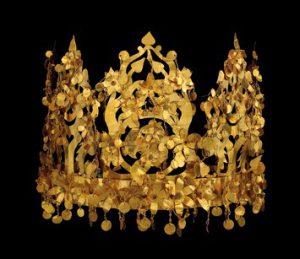
CREDIT: © muse Guimet / Thierry Ollivier
They look a lot like shaman crowns from Siberia only they’re in gold and they’re bigger and bent here and so forth.
And one more reason to suppose, I just remembered, that this queen (from tomb 98) was a real queen, is that when a site in Afghanistan, from the first and second centuries BC, were excavated everyone in Korea got really excited because the crown looked a lot like the shaman crown of Korea.
(It was) made with gold, with little dangling things with little trees on it and so forth. Not identical but they had little things dangling down around the face to. That was on a female, not a male.
There are a lot of dots to connect and the (picture) isn’t firm but nevertheless as (this is) the best way to connect it.
OJ- Was Silla a patriarchal society or did women have a higher level of rights during this time than you see later on in East Asia?
SN- I am pretty sure they had much higher standing. For one reason these ranks, the bone ranks, there was holy bone and true bone and several more ranks underneath that. And those were much more important than gender. So that it was really the bone ranks that were the way that society was structured rather than gender structure.
Also there’s a similar thing that happens in Japan, a women named Joan Piggott has studied the early kingly societies in Japan that had mounded burials, similar but not identical to in Korea. They are definitely related to the Korean Kingdom. They have earlier, almost contemporary writings from Japan.
And they talk about real queens and ruling pairs, brothers and sisters sometimes, husband and wife sometimes. One way to possibly construct this is that the queen of the pair, the female of the pair, is the shaman, she’s the one who can get in touch with supernatural pairs and the male of the pair is the General. He’s the warrior, the leader of troops.
The husband of the women, the queen, in Tomb 98, had enormous amount of weaponry in his tomb, it’s huge but not a gold crown.
OJ- Going onto China do you think that Lady Hao was a diviner herself?
SN- I think so. Again we have some writing that allows that interpretation. The writing that allows that interpretation is on Oracle Bones, bones that were written to ask questions of the ancestors and the spirits. What’s going to happen in the future.
The Oracle bones themselves tell us that women, often royal women, were preparers of the Oracle bones. It doesn’t say that they were diviners exactly but it leaves the door open to that interpretation. So Lady Hao could have divined on her own, but we don’t know that for sure. No oracle bones that I know of has been read in which it said I Lady Hao am making this request of the spirits. So there’s no smoking gun, there’s no definite proof, only that within the possibilities.
OJ- I always thought it was interesting that in China the first writings, the Oracle Bones, talk about spiritual and not economic matters. Could you explain to our readers what your thoughts are on why ancient Chinese writing, at first, talked about spirit matters until eventually talking about economic?
SN- It’s really a matter of what’s preserved archaeologically, probably there’s all kinds of things that they wrote and we’ll never know what they were because they were written on bamboo or silk or wood or some other material. It happens that the earliest writing that we really read is on the Oracle bones.
And of course the Oracle bones are all about oracles and they’re all about asking the spirits. And that’s why it appears that the Shang were an incredibly spirit written society. Of course they were but they had other things I’m sure that they must have written about but they just haven’t been preserved in the archaeological record.
OJ- In your 2008 book you said that there is little actual evidence of ruling women in China exists. From what little is known is there a possibility that a female ruler could have existed in Shang times or earlier in Chinese history?
SN- We’re left with kind of a guessing game and it’s complicated by the fact that anybody who looks like a leader in a Neolithic site is called a male. Until very recently the Chinese have not sexed their burials the way Westerners (have).
We’re not really sure who they are if it’s a large person it’s a male if it’s an important person it’s a male. That’s kind of the way they do it…
OJ- In China the last kings of Shang, as I understand, became the sole diviner. What are your thoughts on why divining evolved to the point where only the king could divine?
SN- I think it’s because the more and more they divined they asked the ancestors rather than the spirits. So at the beginning they have questions addressed to the wind spirits, and to the rain spirits and to the mountain spirits, and to the spirits of the directions and so forth.
But by the time you get to the last king of Shang it’s almost all being addressed to the ancestors and they’re the king’s ancestors. So he gets a monopoly on the spirits by having only his ancestors that can get in touch with those spirits out there. It’s kind of an interesting control mechanism in my opinion.
OJ- When we talk about shamans is communicating with the spirits a compulsory element of being a shaman? Can you be a shaman without communicating with these spirits?
SN- I think it is an essential element of being a shaman is being able to be an intermediary between humans and whatever powers are out there. I would say no you can’t be a shaman without communicating with spirits.

